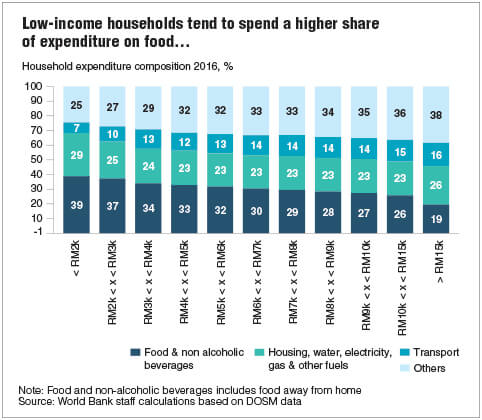Well, this sounds a little unsettling!
According to The World Bank’s latest Malaysia Economic Monitor (MEM) report, it was predicted that our Gross Domestic Product (GDP) growth rate will continue on strong at 5.2 per cent in 2018.
Among its other findings is that Malaysia’s gross national income (GNI) per capita is estimated to surpass RM49,923 between 2020 and 2025.

Source: The Malay Mail
However, more than half of Malaysians are expected to still be earning less than the GNI during this time. The reason being that our country’s distribution of income is skewed more towards the rich, according to the Edge Markets.
On top of that, the MEM report also brought up the issue of lower-income households experiencing a disproportionate impact from increasing inflationary pressures. This phenomenon is especially true for those in urban areas who spend a larger percentage of their salaries on goods and services with significant price increases.

Source: Shuttershock
An excerpt from the report reads,
“The poorest households have been disproportionately affected by the build-up of inflationary pressures over the past years with higher relative increases in food prices. This effect has been even more pronounced in urban areas as food price inflation has been higher compared to in rural areas.”
“The poorest 10% of Malaysians spend almost 70% of their income on food and housing alone,” World Bank director for Malaysia, Thailand and regional partnerships Dr Ulrich Zachau told the daily.

Source: The Edge Markets
The World Bank report however, pointed out that the GNI is not the sole indicator of a nation’s development and that the well-being of citizens should also be measured from different perspectives.
“Prosperity is not only about money or income, but about achieving human aspirations,” Dr Zachau stated.
The director also mentioned that Malaysia should do its best to create more job opportunities for people from lower-income groups to sustain economic growth and that Malaysia’s growing economic prosperity has presented opportunities for deeper structural reforms.
What do you think of the findings from this latest World Bank report? Let us know in the comments below!
Also read: Malaysian Youths Revealed to Be Bankrupt Before Hitting 30, Here’s Why





































